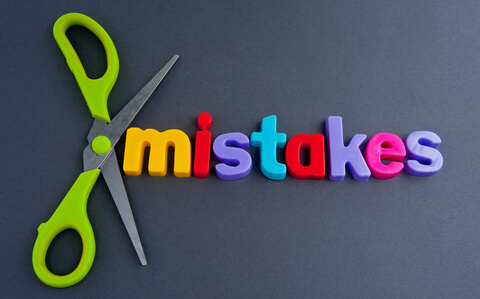Content marketing has grown to become one of the most popular online marketing strategies in recent years. Companies are more interested than ever in knowing the reasons content marketing fails or succeeds.
A 2016 report by the Content Marketing Institute shows that 30 percent of B2B marketers believe their organizations use content marketing effectively.
Likewise, Tempesta Media’s first Current State of Content Marketing and Marketing Technology research report shows that 90 percent of companies with growing revenue deployed content marketing campaigns.
Although there are no hard and fast rules when it comes to online content marketing, there are a few obvious don’ts certain to kill an organization’s content marketing platform, such as a blog. Content marketing fails because of poor keyword research, poorly researched topics, no CTAs and poor audience interaction.
Read on to learn more about why content marketing fails, and how to avoid them.
Disregarding the relationship between SEO and content marketing
With Google emphasizing the importance of original, high-quality content as a key ranking signal, content marketing has overshadowed traditional search engine optimization as a marketing tactic.
This, however, is the wrong tack. As many marketers have come to learn, content marketing and SEO form a symbiotic relationship. In fact, for content marketing to succeed, it needs to be integrated with SEO – a factor many organizations fail to recognize.
Content creation tactics should feed off of comprehensive SEO analyses. This includes, among others:
- Keyword research
- Landing page effectiveness
- Page speed
- Clickthrough rates
- Bounce rates
SEO is important because of its focus on visibility. Even if an organization pushes high-quality content, it would be useless if no one sees it. This is exactly where SEO comes in, providing the necessary tools and data to increase a content asset’s visibility.
Not amplifying the content
An organization may have created a great piece of content, complete with optimized SEO and a call to action. That’s fantastic, but if all it does is sit on their blog or website, they won’t see the results they’re are looking for. Organic traffic isn’t enough to hit the target numbers.
The content needs to get in front of as many eyes as possible. How? Through amplification and various forms of sharing, such as influencer marketing, social media outlets, email marketing and paid advertising.
It may take a little more investment, but amplification increased leads, resulting in greater success for your content marketing and sales initiatives.

Not using any calls to action
The bottom line with content marketing is to use content assets to encourage readers to take action, which is also known as a conversion. With content marketing, it is not enough to simply publish content and wait for results to happen. Should this continue to happen, the campaign fails to maximize the organization’s return of investment.
Oftentimes, all it takes for readers to click the like button, share the content asset or even to turn into paying customers, is a nudge in the right direction.
A call to action literally tells people what to do after reading a content piece. Although there are many strategies to implement calls to action, an organization’s CTAs should depend on its content marketing goals.
- Is it to spread content and boost brand awareness? If so, content sharing should be the priority.
- Is it to generate sales? The CTA and the content itself should focus on product information and encouraging the reader to buy.
- Is to generate leads? Then the CTA may have to be geared towards gaining newsletter subscriptions
Inconsistency with content marketing
Content marketing is also about building a brand’s image and reputation, and consistency is key to ensuring an organization’s target audience maintains a favorable view of the company. This means doing the following:
- Sticking to a consistent message
- Posting content on a consistent basis
- Consistently targeting the right audience.
The effects of inconsistency are easy to understand. For example, if an organization’s website or official blog has not been updated in three years, customers may think the company is inactive, or worse, in decline.
Admittedly, publishing content consistently may be a problem for organizations with small writing teams, or none at all. This is where the value of outsourcing content marketing, or at least the content creation aspect of it, shows itself.
Failing to measure content and campaign performance
Producing content is just one aspect of the online content marketing process. Measuring content performance is just as importance – this is the best way of determining a content asset’s effectiveness. Although many organizations will cite the lack of tools and analytics systems to measure content performance, more often than not, the reason boils down to a lack of motivation.
Measuring content gives content marketers a plethora of valuable data, such as:
- The most effective topics with readers
- The best times to post content
- Bounce rates, or the percentage of readers that click on a content asset but leave
- Audience engagement
In summary
- Content marketing has grown to become a critical component of online marketing
- Although there are several approaches to content marketing, there are a few content marketing mistakes to take note of and avoid
- Remember to treat SEO and content marketing as separate, but very intertwined strategies
- Always use calls to action on all content assets
- Consistency is critical to content marketing success: consistency in message and tone, publishing frequency, and target audience
- Always measure the performance of content assets
Need help?
If you have a content marketing program or are planning one, download our e-book “100 Mistakes Businesses Make When Starting, Optimizing and Scaling Content Marketing Programs.”
This e-book will walk you through the mistakes of hundreds of other companies and the challenges they faced in implementing their content marketing programs. To learn more about how Tempesta Media can help you streamline your content creation process and deliver quality content at scale, contact us today.










